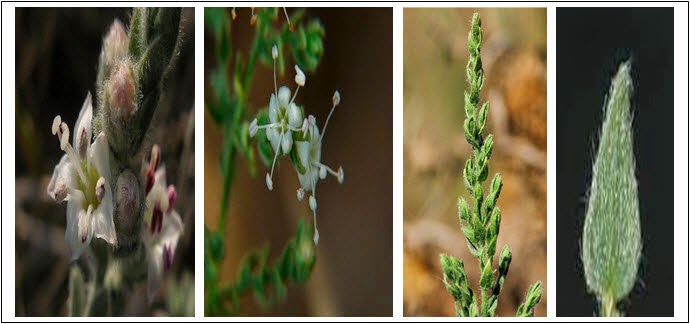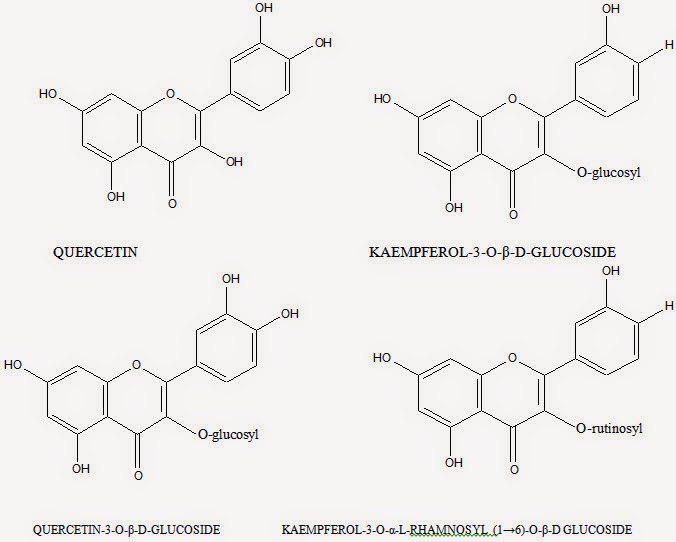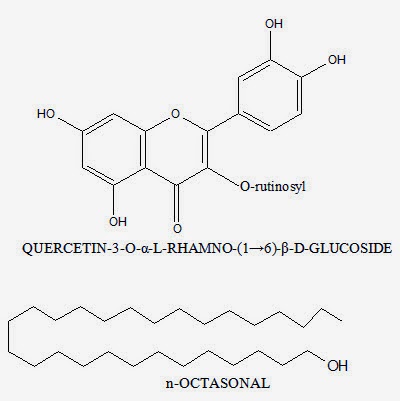{ DOWNLOAD AS PDF }
ABOUT AUHTORS
Nishant Verma 1*, K.K. Jha1, Rajesh Sharma1, Sudhir Chaudhary2, Ajai Kr. Singh3, Arvind Kumar 4
1Department of Pharmaceutical Chemistry, T. M. College of Pharmacy, Teerthanker Mahaveer University, Moradabad, Uttar Pradesh, India
2Department of Pharmaceutical Technology, MIET, Meerut, Uttar Pradesh, India
3Department of Pharmaceutics, Gandhi College of Pharmacy, Karnal, Haryana, India
4Department of Quality Assurance, Onco Therapies Limited (A Mylan Company), Bangalore, Karnataka, India.
* nishantvermamiet@gmail.com
ABSTRACT
Since long, the ayurvedic period, the herbal drugs were the sole source of medication for majority of population pertaining to the holistic approaches consisting of easier method of uses and better results. Despite vast continuous developments in the drug therapy, herbal sources are still of great importance and nearly 60% of the world’s population continuously using such drugs. These are not only used for primary healthcare in rural areas in developing countries, but also in developed countries as well where modern medicines are predominantly available. In spite of industrious and versatile unbroken advancements in ayurvedic medicines of the present therapeutic arena, still a huge number of herbal origins leading to a vast variety of flora remains unexplored that could be utilized in the treatments for several afflictions i.e. diabetes mellitus, hepatitis, inflammation, cirrhosis of lever, cancers etc. Hence the satisfactory and safer solution to these problems of the public health care requires tremendous attention of the researchers to explore out medicinally efficacious plants and isolate potent molecules from them. Evaluation of such molecules could generate broader spectrum of pharmacodynamic and pharmacokinetic parameters with least toxicity. Cressa cretica (Linn) belonging to family Convolvulaceae. It is commonly known as Rudravanti. Traditionally root and leaves of Cressa cretica are commonly used as expectorant and antibilious agent. It is a holophytic dwarf shrub used in folklore medicine. This article gives the updated information on its properties.
INTRODUCTION
The major hindrance in the amalgamation of herbal medicines into modern clinical therapy is the lack of scientific and clinical data, and better understanding of the efficacy and safety of the herbal products. To ensure the quality, safety and standardization of such products is the challenging task for phytochemists and the medicinal chemists of the present and future era. The holistic approaches provided valuable clues for selection and preparation of such formulation, as efficacy has been established by the common use.[1] In the last few decades there has been an exponential growth in the field of herbal medicine and the populariety of herbal drugs in the developed countries due to its natural origin with lesser side effects.[2] Majority of the traditional medicines used in healthcare are obtained from plants.[3] In spite of several advencements in the field of clinical and pharmaceutical investigations have in fact elevated the status of medicinal plants by identifying the role of active principles present in them and elaborating on their mechanism of action in the human system.[4] The WHO estimated that approximately 80% of world population trusts on traditional medicines in their health care but now a days Ayurveda coexists with modern system of medicine widely used in practice.[5] In the traditional system of medicine lot of practitioners used their own formulation.[6] Cressa cretica (Linn) is commonly known as Rudravanti and belonging to family Convolvulaceae.[7] Cressa cretica (Linn) a halophytic plant which is referred to by the name that reflects the features of Sanjeevani so it is called Sanjeevani. It is mysterious and sought after herbs in India mythology. It’s existence and identity are steeped in deep controversy.[8]
SYNONYMS
Rudravanti, Uppugaddi, Dahna, Chaval, Uppusanaga, Mullumaddugida, Lona, Rudanti, Azhukanni, Uppu Marikkozhundu, Oan.
GEOGRAPHICAL DISTRIBUTION
Cressa cretica (Linn) is a small, dwarf shrub upto 38 cm height. It is start to shoot in the beginning of June. The height of the plant was found to be 7 cm-29 cm but mostly are of 14 cm in hight. The time of fruits and flowers from June to August but during September the plant gradually withers. The plant is distributed throughout India, along sandy shores.[9,10]
BOTANICAL DESCRIPTION

Cressa cretica is a cushion chemaephyte excretive halophyte, an erect dwarf twining shrub up to 38 cm in height. Roots horizontal geminate, with lateral branches leading upward to produce above-ground parts. Perennial subshrub or herb, usually much-branched. Stems at first erect and then becoming decumbent, apparently short-lived, grey appressed pilose to sericeous.The flowers are actinomorphic, often showy, and nearly always bisexual.[11] The perianth and androecial whorls are 5-merous. The sepals of the calyx are usually distinct but the corolla is strongly sympetalous, plaited, and often rotate or trumpet shaped with inconspicuous lobes. The stamens are often unequal, and are adnate to the base of the corolla tube and alternate with the lobes. The gynoecium consists of a single compound pistil of 2 or rarely up to 5 carpels, usually an unbranched or 2-cleft style, and a superior ovary of 2 or sometimes up to 5 locules, each with 1 or 2 axile ovules.[12]
[adsense:468x15:2204050025]
Young stems herbaceous, more or less cylindrical to oval in shape and slightly swollen at nodes. Stem at young tips more or less rectangular with deep green colour, odour remarkable, taste unpleasant and sour. Leaves on main branches are often larger than those on branchlets, the blade 1- 12mm long, lanceolate, ovate or elliptic to scale-like, sessile or shortly petiolate. Flowers solitary, axillary, 5- 8mm long, sessile or on short peduncles, bracteate, in spicate to head-like clusters at tips of branchlets, bracteoles unequal in length.[13] Sepals ovate to obovate, imbricate. Corolla salver form, the limb 5-lobed, the lobes mostly ovate, imbricate, spreading to reflexed. Stamens exserted; filaments filiform; styles exserted. Ovary 2-locular, 4-ovulate; styles 2, distinct to the base; stigmas capitate. Fruit capsular, ovoid, unilocular, 2-4-valved, usually 1 seeded. Seeds 3- 4mm long, glabrous and smooth and shining to reticulate, dark brown.[14]
CHEMICAL CONSTITUENTS
|
S.N. |
Part of Plant |
Extract/Tech. |
Isolated Chemical Constituents |
Ref. No. |
|
1 |
Whole Plant |
Atomic absorption and U.V. spectrophotometry |
Cu, Al, Ca, Mn, P, S, Zn, Fe, Mg |
[15] |
|
2 |
Whole Plant |
fixed oil extract |
β- sitosterol, stigmasterol, avenasterol, β- tocopherol. |
[16] |
|
3 |
Seeds |
Edible oil |
Twelve unsaturated & four saturated fatty acids |
[17] |
|
4 |
Whole Plant |
Atomic absorption spectroscopy |
Four common heavy metals lead, zinc, copper and nickel |
[18] |
|
5 |
Whole Plant |
EIMS, HREIMS, FAB, HRFABMS, NMR |
Triacontanoic acid, 24-hydroxy-4 octacosanone, 24-nor-12-ursene, β-amyrin, stigmasterol, ursolic acid, and stigmasterol 3-O-β-D-glucoside, |
[19] |
|
6 |
Aerial parts |
UV, FAB-MS, 1H NMR and 13C NMR |
quercetin, quercetin-3-O-glucoside, kampferol-3-O- glucoside, kampferol-3-O-rhamnoglucoside and rutin. |
[20] |
|
7 |
Aerial part |
Column chromatography |
Cressanyl ester A, B, C, D, E, F and G, and cressatriterpenic acid. |
[21] |
|
8 |
Aerial part |
1H NMR and 13C NMR |
syringaresinol-β-d-glucoside |
[22] |
|
9 |
Shrub |
Aqueous extract |
Chemical analysis of minerals |
[23] |
|
10 |
Fruits |
Alc. Extract |
7,4'-dihydroxy-5 methoxy Coumaranochromone-7-O-β-D-glucoside |
[24] |
|
11 |
Aerial parts |
Column chromatography |
Quercetin glycoside |
[25] |
|
12 |
Aerial parts |
1H NMR and 13C NMR, MASS spectroscopy |
Β-sitosterol, its glycoside, n-octacosanol, umbelliferone, scopoletin, isopimpinellin and quercetin |
[26] |
|
13 |
Whole Plant |
Ehanolic extract |
26-cyclopentyl hexacosane (creticane), 4?-methyl hexa-5¢-enoyl-n-tetracosa-17-ol-1-oate (cressatetracosanoate), n-nonacosa-6-one-1-oic (cressanonacontanoic acid), tetratriaconta-29-one-1-oic acid (cressatetratriacontanoic acid), 25-methyl-n-triacont-3-one-25-ol acid (cressatriacontanone) and a-26-octadeca-hydronaphthacenyl-n-pentacosa-3-one (cressanaphthacenone) |
[27]
|
|
14 |
Aerial parts |
Ehanolic extract |
n-Octacosanol, β-sitosterol, umbelliferone, scopoletin, isopimpinellin, β-sitosterol D (+) glucoside and quercetin. |
[28] |
NOW YOU CAN ALSO PUBLISH YOUR ARTICLE ONLINE.
SUBMIT YOUR ARTICLE/PROJECT AT articles@pharmatutor.org
Subscribe to Pharmatutor Alerts by Email
FIND OUT MORE ARTICLES AT OUR DATABASE



BIOLOGICAL ACTIVITIES
|
S.N. |
Part of Plant |
Extract Used |
Biological activity |
Ref. No. |
|
1 |
Whole Plant |
Methanolic extract |
Antimicrobial activity |
[29] |
|
2 |
Whole Plant |
water extract |
Germination of pollen grains |
[30] |
|
3 |
Whole Plant |
Ethylacetate and methanolic extract |
Bronchodilatory activity and mast cell stabilising activity. |
[31] |
|
4 |
Aerial parts |
Methanolic and ethyl acetate extract |
Anti-inflammatory activity and Antioxidant activities |
[32] |
|
5 |
Whole Plant |
Methanolic extract |
Antitussive activity |
[33] |
|
6 |
Whole Plant |
Crude solvent extract |
Antifungal activity |
[34] |
|
7 |
Whole Plant |
Aqueous and alcoholic extract |
Antibacterial activity |
[35] |
|
8 |
Whole Plant |
Aqueous and alcoholic extracts |
Antibacterial activity |
[36] |
|
9 |
Whole Plant |
n-butanol extracts |
Antioxidant and radical scavenging activity |
[37] |
|
10 |
Whole Plant |
n-butanol extract |
Phosphomolybdenum complex assays and the radical scavenging activity |
[38] |
|
11 |
Whole Plant |
Methanolic extract |
Testicular function |
[39] |
|
12 |
Whole Plant |
Ethanolic extract |
antifungal activities |
[40] |
|
13 |
Whole Plant |
Alcoholic extract |
Contraceptive properties |
[41] |
|
14 |
Whole Plant |
Ethanolic extract |
Protective effective |
[42] |
USES
The plant Cressa cretica used as tonic, stomachic, anthelmintic with aphrodisiac properties. It is useful for the treatment of asthma, constipation, leprosy and urinary discharges.[43] Traditionany it is used as stomachic, anti bilious, expectorant, asthma, emetic and also used as alterative drug.[44,45]
CONCLUSION
Rudravanti (Cressa cretica) emerged as a good source of traditional medicine for the treatment of antimicrobial, bronchodilatory, anti-inflammatory, antioxidant, antitussive, antifungal, antibacterial activity. Although many of the experimental studies validated its traditional and medicinal uses. The study of herbal medicine spans the knowledge of biology, history, source, physical and chemical nature, mechanism of action, traditional, medicinal and therapeutic use of drug. This article also provide knowledge about macroscopical and microscopial characters of rudravanti with wast knowledge of its cultivation, collection and harvesting with its geographical sources. Efforts are therefore needed to establish and validate evidence regarding safety and practices of ayurvedic medicines. The outcome of these studies will further expand the existing therapeutic potential of Cressa cretica and provide a convincing support to its future clinical use in modern medicine.
REFERENCES
1. Seth S.D, Sharma B. Medicinal plants of India. Indian J. Med. Res., 2004, Vol-120, 9-11.
2. Patel, B. V., A seminar report on herbal drugs, present status and future prospects, perd centre, Ahmedabad, 2001.
3. Kala, C. P., farooquee, N. A., Dhar, U., Prioritization of medicinal plants on the basis of available knowledge, existing practices and use value status in Uttaranchal, India, Biodiversity and conservation. 2004, Vol.-13, 453-469.
4. Dutta, S. C., Medicinal Plants, National council for education research and training, New Delhi, 1973.
5. Research guidelines for evaluating the safety and efficacy of herbal medicines, WHO, regional office for the Western pacific, Manila, 1993, 1-3.
6. Seth S.D, Sharma B. Medicinal plants of India. Indian J. Med. Res., 2004, Vol-120, 9-11.
7. Aggarwal, V. S., Drug plants of India, 1997, Vol.-I, 300.
8. Ganeshaiah, K. N., Vasudeva, R., Uma Shanker, R., In search of Sanjeevani. Curr Sci. 2009, Vol-97, 484-489.
9. Saxena, H. O., Brahmam, M., The Flora of Orissa, Bhubaneswar., Capital business services and consultancy; 1995, Vol-3, 1563.
10. Warrier, P. K., Nambier, V. P., Ramankutty, C., Indian medicinal plant a compendium of 500 species. CSIR, New Delhi India, 1990, Vol-1, 219.
11. Daniel, F., Austin, A., Botanical journal of the linnean society, 2000, Vol-133(1), 27-39.
12. Ganeshaiah, K. N., Vasudeva, R., Uma Shanker, R., In search of Sanjeevani. Curr Sci. 2009, Vol-97, 484-489.
13. Saxena, H. O., Brahmam, M., The Flora of Orissa, Bhubaneswar., Capital business services and consultancy; 1995, Vol-3, 1563.
14. Warrier, P. K., Nambier, V. P., Ramankutty, C., Indian medicinal plant a compendium of 500 species. CSIR, New Delhi India, 1990, Vol-1, 219.
15. Pirzada, A. J. Shaikh, W. Ghani, K. U. Laghari, K. A. Sindh University Research Journal (Science Series). 2009, Vol-41(2), 15-20.
16. Mohamed, I. I. Bulletin of Faculty of Agriculture, Cairo University. 2007, 58(4), 251-255.
17. Weber, D.J., Ansari, R., Gul, B., Ajmal Khan, M., “Potential of halophytes as source of edible oil.” Journal of Arid Environments., 2007, Vol- 68(2), 315-321.
18. S. Raje, R.T. Sane, K. Mangaonkar, S. Shailajan, G. Pathak, N. Jariwala, D. Kasar, Journal of the Indian Chemical Society. 2006 ,Vol.- 83(6), 611-612.
19. S. Hussain, E. Ahmed, A. Malik, A Jabbar, M. Arshad, Journal of the Chemical Society of Pakistan. 2005, Vol.- 27(3), 296-298.
20. A.A Shahat, N.S. Abdel-Azim, L. Pieters, A.J. Vlietinck. Pharmaceutical Biology.2004, Vol.- 42(4-5), 349-352.
21. Ramidi Ramachandran Mohd. Ali. Isolation and characterization of acyclic terpenic constituents from Cressa cretica aerial parts. Journal of Medicinal and Aromatic Plant Sciences. 2003, Vol.- 25(1), 81-90.
22. A.A. Shahat, N.S. Abdel-Azim, L. Pieters, A.J. Vlietinck. Fitoterapia. 2004, Vol.-75(7-8), 771-773.
23. R. P. Rastogi, B.N. Mehrotra. Compendium of Indian Medicinal plants. Central Drug Research Institute, Lucknow and National institute of science communication and information resources, New Delhi, Vol.-I, 2004, 126.
23. B. Ahmed. Cresoside: a new coumaranochromone glycoside from fruits of Cressa cretica Linn Indian Journal of Natural Products 1998, Vol.-14(2), 29-32.
24. R. P. Rastogi, B.N. Mehrotra. Compendium of Indian Medicinal plants. Central Drug Research Institute, Lucknow and National institute of science communication and information resources, New Delhi, Vol. II, 2006, 217.
25. R. P. Rastogi, B.N. Mehrotra. Compendium of Indian Medicinal plants. Central Drug Research Institute, Lucknow and National institute of science communication and information resources, New Delhi, Vol. III, 2005, 254.
26. Ramachandrun, R. Ali, M. Mir, R.S. “Isolation and charactrization of aliphatic constituents from Cressa cretica aerial parts.” J. Saudi Chem. Soc., 2004, Vol-8, 523-530.
27. Tiwari HP, Kakkar A., “Phytochemical examination of Cressa cretica Linn. (Rudanti).” Journal of the Indian Chemical Society, 1990, Vol.-67(9), 785.
28. Sunita, P., Jha, S., Pattanayak, S. P., Mishra, S. K., “Antimicrobial activity of a halophytic plant Cressa cretica L.” Journal of Scientific Research., 2012, Vol-4, 1, 203-212.
29. Kumbhar, B. A., Patel, G. R., “Effect of allelochemicals from Cressa cretica L. on in vitro pollen germination of cajanus cajan (L.) mill sp.” Bioscience Discovery., 2012, Vol-3(2),169-171.
30. Priyashree, S., Jha, S., Pattanayak, S. P., “Bronchodilatory and mast cell stabilising activity of Cressa cretica L. Evaluation through in vivo and in vitro experimental models.” Asian Pacific Journal of Tropical Medicine., 2012, Vol-5(3), 180-186.
31. Sunita, P., Jha, S., Pattanayak, S. P., “Anti-inflammatory and in-vivo Antioxidant activities of Cressa cretica Linn., a halophytic plant.” Middle-East Journal of Scientific Research.,2011, Vol- 8(1), 129-140.
32. Sunita, P., Jha, S., Pattanayak, P. S., “In-vivo antitussive activity of Cressa cretica Linn. Using cough model in rodents.” Pharmacognosy Research., 2009, Vol-1(3), 157-161.
33. Pirzada, A. J., Shaikh, W., Ghani, K. U., Laghari, K. A., “Study of antifungal activity and some basic elements of medicinal plant Cressa cretica Linn against fungi causing skin diseases.” Sindh Univ. Res. Jour., 2009, Vol-41(2), 15-20.
34. Parekh, J., Chanda, S. V., “Antibacterial Activity of aqueous and alcoholic extracts of 34 Indian medicinal plant against some staphylococcus species.” Turk J Biol, 2008, Vol-32, 63-71.
35. Chanda S., Parekh, J., “In vitro screening of antibacterial activity of aqueous ans alcoholic extracts of various Indian medicinal plant species against selected pathogens from Enterobacteriaceae.” African Journal of Microbiology Reasearch., 2007, Vol.-1(6), 092-99.
36. Saleh, A. B., Mubarak, A. R., Khadija, A. O., Abdulkhader, H., “Screening of antioxidant and radical scavenging activities os some omani medicinal plants.” SQU Journal For Science. 2007, Vol-12(1), 1-6.
37. Busafi SA, Riyami AM, Khadija AO, Hisham A, “Screening of Antioxidant and Radical Scavenging Activities of Some Omani Medicinal Plants.” SQU Journal For Science, 2007 Vol.- 12(1), 1-6.
38. Gupta, R. S. Kachhawa JBS Khushalani, V. Tanwar, K. Joshi, Y. C., “Effect of Cressa cretica methanol extract on testicular function of albino rats.” Pharmaceutical Biology, 2006. Vol- 44(5), 382-388.
39. Mandeel Q, Ahmed T., “Assessment of in vitro antifungal activities of various extracts of indigenous Bahraini medicinal plants.” Pharmaceutical Biology., 2005, Vol-43 (4), 340-348.
40. M. J Shah, S. Fazil, T. Faheem, A. Waheed. Hamdard Medicus. 1997. Vol.-40(2), 34-36.
41. S Satakopan , GK Karandikar. J Sci Ind Res, C Biol Sci. 1961, Vol.- 20,156.
42. Pragati, K., Ghanshyam, Y., Sudhir, C., Lubhan, S., Investigation on protective effective of Cressa cretica extract in scopolamine induced memory impairment. International Journal of Pharmacology & Toxicology., 2014, Vol.- 2(1),13-16.
43. AM Rizk, GA El-Ghazaly. Medicinal and Poisonous Plants of Qatar. University of Qatar. Scientific and Applied Research Centre. 1995,101.
44. C.P. Khare, Indian medicinal plants, Springer (India) Private Limited, 2007, 177-178.
45. Hocking Macdonald G. A Dictionary of Natural Products. Medford, N.J.7 Plexus Publishing, 1997.
REFERENCE ID: PHARMATUTOR-ART-2214
|
PharmaTutor (ISSN: 2347 - 7881) Volume 2, Issue 8 Received On: 24/04/2014; Accepted On: 30/05/2014; Published On: 01/08/2014How to cite this article: N Verma, KK Jha, R Sharma, S Chaudhary, AK Singh, A Kumar; Biological Properties, Phytochemistry and Traditional uses of Rudravanti (Cressa Cretica): A Review; PharmaTutor; 2014; 2(8); 154-161 |
NOW YOU CAN ALSO PUBLISH YOUR ARTICLE ONLINE.
SUBMIT YOUR ARTICLE/PROJECT AT articles@pharmatutor.org
Subscribe to Pharmatutor Alerts by Email
FIND OUT MORE ARTICLES AT OUR DATABASE











